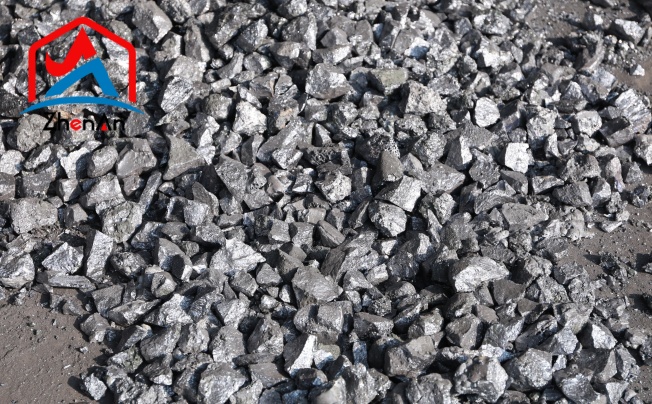Pure silicon refers to silicon that has been refined to a high degree of purity, typically exceeding 99.9999%. This level of purity is essential for various industrial applications, especially in the semiconductor and electronics industries where even minuscule impurities can significantly affect performance.
Atomic Structure and Composition
Silicon, with the atomic number 14 and the chemical symbol Si, is a crucial element in modern technology due to its unique atomic structure. In its pure form, silicon atoms arrange themselves in a crystal lattice structure known as a diamond cubic structure.
Each silicon atom shares four valence electrons, forming strong covalent bonds with neighboring atoms. This structured arrangement results in a sturdy and stable material ideal for various applications in the semiconductor industry.
The purity of silicon is paramount to its performance in electronic devices. High-quality silicon must have an extremely low level of impurities, typically measured in parts per billion (ppb).
Even minute impurities can significantly alter the conductivity and other properties of silicon, affecting the functionality of electronic components. To achieve high purity levels, manufacturers employ sophisticated purification techniques such as zone refining and chemical vapor deposition to eliminate impurities and ensure the crystal structure remains intact.
Physical Properties
Pure silicon exhibits remarkable physical properties that make it indispensable in various industries. It has a melting point of 1414 degrees Celsius and a boiling point of 3265 degrees Celsius, showcasing its high heat resistance.
Additionally, silicon possesses a density of around 2.33 grams per cubic centimeter, making it relatively lightweight yet durable. These properties make silicon an ideal candidate for applications requiring thermal stability and structural integrity.
One of the most significant characteristics of silicon is its dual nature as both a semiconductor and an insulator. Silicon's conductivity can be altered by introducing specific impurities through a process called doping. By selectively doping silicon with elements like phosphorus or boron, manufacturers can create n-type or p-type semiconductors with distinct electrical properties.
Extraction from Silica (Silicon Dioxide)
The extraction of pure silicon from silica, also known as silicon dioxide, is a meticulous and multi-step process.
One common method involves reducing silica with carbon in an electric furnace at high temperatures.
In this process, a mixture of silica and carbon is heated to around 2000 degrees Celsius, causing the carbon to react with the oxygen in the silica, resulting in the formation of silicon and gaseous byproducts like carbon monoxide. This reduction reaction is carefully controlled to ensure the purity of the extracted silicon.
Purification techniques: Once silicon has been obtained through the extraction process, it undergoes rigorous purification techniques to achieve high levels of purity required for various industrial applications. One commonly used purification method is zone refining, where impurities are gradually moved along a rod of molten silicon by localized heating.
This technique helps in concentrating impurities at one end of the rod, leaving behind a highly pure form of silicon at the other end. Another purification technique is chemical vapor deposition (CVD), where a gas containing precursor molecules is decomposed on a heated substrate to deposit pure silicon layers.
Manufacturing Methods for High-Purity Silicon
Czochralski process for growing single-crystal silicon ingots: The Czochralski process is a well-established method for producing large single-crystal ingots of high-purity silicon. In this process, a seed crystal is dipped into molten silicon and slowly withdrawn while rotating. As it's pulled out, more molten silicon solidifies onto the seed crystal's surface, forming a single crystal ingot with uniform properties throughout its structure.
This method allows for precise control over impurities and crystalline defects in the final product. Float-zone method for producing ultra-high purity silicon wafers: The float-zone technique is another advanced manufacturing method used to produce ultra-high purity silicon wafers with exceptional quality standards.
In this method, a rod or boule of polycrystalline silicon is melted using radiofrequency induction heating while simultaneously moving along its length slowly without any physical contact support. As it moves through different zones within the induction coil setup, impurities get segregated towards one end due to their differing solubility limits in liquid versus solid state – resulting in ultra-pure crystalline structures suitable for semiconductor applications.
Applications of Pure Silicon
Silicon in the Semiconductor Industry
Silicon is the foundation of modern electronics, playing a crucial role in the semiconductor industry. One of its primary applications is in integrated circuits, where tiny silicon chips are etched with intricate patterns to create complex electronic devices.
These integrated circuits power everything from smartphones to computers, enabling the digital revolution we see today. Silicon's ability to act as a semiconductor makes it ideal for use in transistors and diodes within these circuits, controlling the flow of electrical current with precision and reliability.
Moreover, silicon's presence is indispensable in the realm of solar cell technology and photovoltaic devices. Solar cells harness the energy from sunlight and convert it into electricity through the photovoltaic effect.
Pure silicon wafers are used as the substrate for solar cells due to their high efficiency in converting sunlight into usable energy. The versatility of silicon allows for continuous innovation in solar technology, driving advancements toward sustainable energy solutions for a greener future.
The Vital Role of Silicon in the Electronics Industry
In the electronics industry, pure silicon is a key component in manufacturing computer chips and microprocessors that form the brains of electronic devices. These chips contain millions to billions of transistors made from silicon, enabling them to perform complex calculations at lightning speeds.
The scalability and reliability of silicon-based chips have propelled technological progress by powering devices ranging from consumer electronics to supercomputers. Furthermore, silicon finds extensive utilization in sensors, Micro-Electro-Mechanical Systems (MEMS) devices, and optoelectronics within various electronic applications.
Sensors built using silicon technology provide precise measurements for temperature, pressure, acceleration, and more. MEMS devices incorporate miniaturized mechanical components on a single chip to enable functionalities like motion sensing or environmental monitoring.
Optoelectronics merge optics with electronics using materials like silicon photonics to transmit data at high speeds over optical networks. The adaptability of pure silicon continues to drive innovations across diverse electronic sectors.






